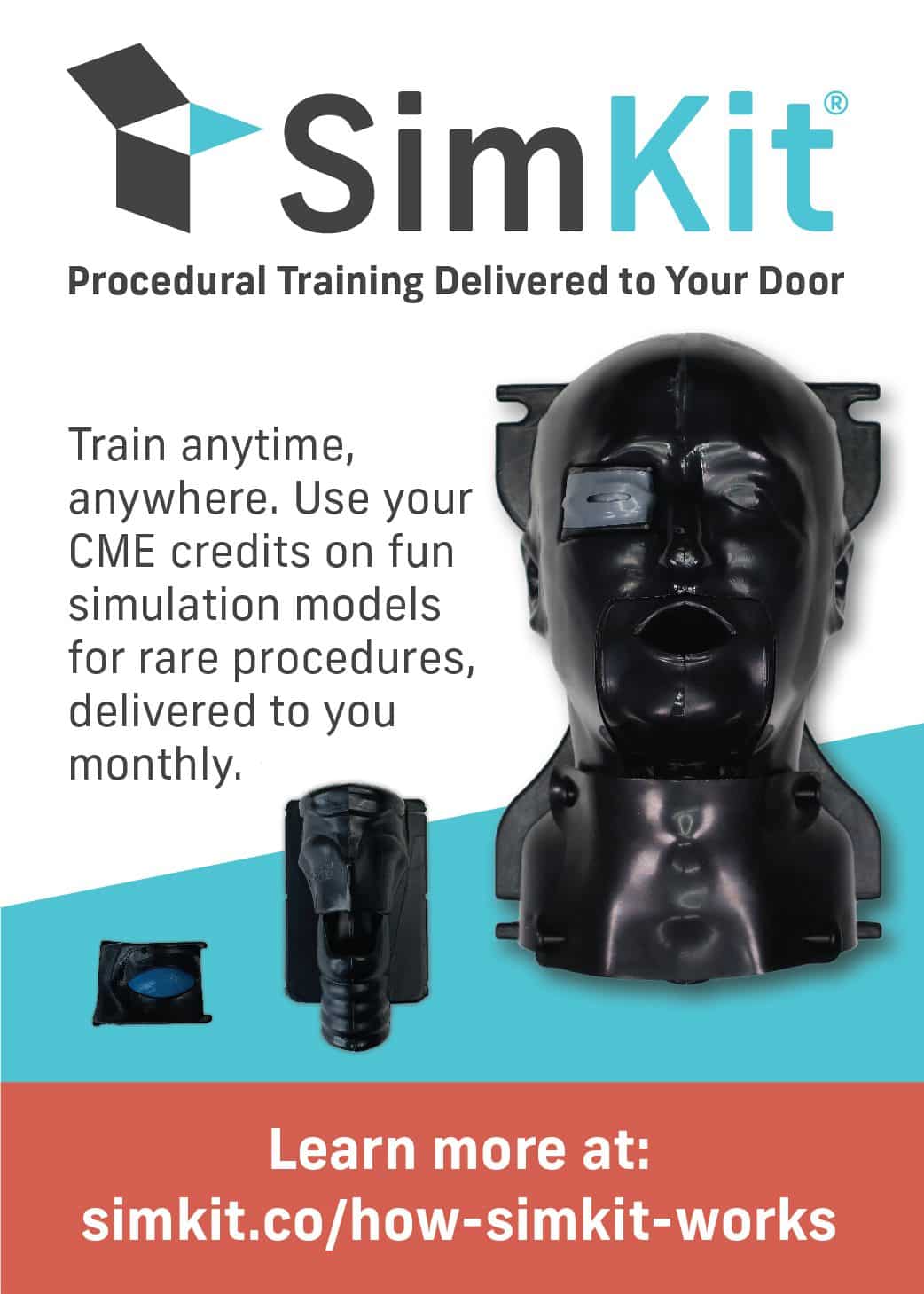
Clinical signs and pressure/volumetric static variables are unreliable predictors of fluid responsiveness [1]. Ventilator-induced dynamic variables such as stroke volume variation and pulse pressure variation, however, have been shown to be more accurate in predicating fluid responsiveness. These tests can only be applied when several criteria are present (e.g., sinus heart rate, mechanical ventilation with a tidal volume of 8-10cc/kg of ideal body weight).
Passive leg raise (PLR) is another method to assess preload responsiveness. PLR produces a temporary and reversible increase in ventricular preload through an increase in venous return from the lower extremities, which mimics fluid administration without actually having to give exogenous fluids. This sounds great in theory, but PLR requires a hemodynamic assessment to be made during the maneuver to determine if the patient is preload responsive or not. There are multiple techniques for assessing changes in stroke volume but the diagnostic performance of each method still remains unknown. The two most commonly described methods are changes in pulse pressure variation and variables of flow.
What They Did:
- Systematic Review and Meta-Analysis
- Included clinical trials when PLR was performed in combination with a fluid challenge as gold standard to define fluid responders and non-responders
- Four methods for assessing changes in stroke volume were used to determine the response PLR
- Esophageal Doppler
- Transthoracic Echocardiography
- Calibrated Pulse Contour Analysis
- Bioreactance
- All methods used to assess PLR measured a variable of flow as the outcome:
- Cardiac Output
- Direct Derivatives Cardiac Index, Stroke Volume (Index) or Aortic Blood Flow
- A cutoff value to differentiate between fluid responders and non-responders was determined to be an increase of 15% of which 53% +/- 12% of patients responded to a fluid challenge
Outcomes:
- Provide an overview of the predictive value of PLR in various clinical settings and patient groups
- Compare diagnostic performance of different measurement techniques and outcome variables on PLR
Results:
- 23 trials with >1,000 patients and fluid challenges
- Pooled Sensitivity of 86% (95% CI 79 -92%)
- Pooled Specificity of 92% (95% CI 88 – 96%)
- Summary Area Under the Receiver Operating Characteristic Curve of 0.95 (95% CI 0.92 – 0.98)
- Mode of ventilation, type of fluid used, passive leg raise starting position, and measurement technique did not affect the diagnostic performance of PLR
- Diagnostic Performance of Pulse Pressure Variation vs. Flow Variables (i.e. Cardiac Output, Stroke Volume)
- Pulse Pressure Variation
- Sensitivity 58% (95% CI 44 – 70%)
- Specificity 83% (95% CI 68 – 92%)
- Flow Variables
- Sensitivity 85% (95% CI 78 – 90%)
- Specificity 92% (95% CI 87 – 94%)
- Pulse Pressure Variation
Strengths:
- This study adhered with the guidelines provided by the Preferred Reporting Items for Systematic Reviews and Meta-Analysis statement
- Quality of included studies was assessed by Quality Assessment of Diagnostic Accuracy Studies 2
- All studies were prospectively performed in the ICU except for:
- 1 Study in the Department of Anesthesiology and Obstetrics
- 1 Study in the Emergency Department
- 1 Retrospective ICU study using an electronic chart review
Limitations:
- The use of different cutoff values of fluid responsiveness, measurement techniques, and outcome variables created heterogeneity in the combined included studies
- With only 23 included studies, some subgroups were too small for further analysis
- Only adult studies were included in the analysis , therefore no statements can be made about the predictive value of PLR in children
- Studies on outcome using PLR to guide fluid administration in the ICU are lacking (i.e. patient-oriented outcomes)
Discussion:
- PLR was performed by lifting lower extremities in a straight manner to an angle of 45 degrees (most were performed from a semi recumbent starting position)
- PLR offers a reversible tool to augment cardiac preload within a minute, but the exact amount of increase in venous return is unpredictable. Reported amount of volume “auto transfused” by PLR ranges from 250 – 350cc.
- Using a semi-recumbent starting position induces a larger volume transferred when compared to the supine starting position because venous blood not only from the legs but also from the large splanchnic compartment is mobilized. However this study did not find a difference in diagnostic performance of PLR between the semi-recumbent and supine positions.
- In patients with intra-abdominal hypertension (i.e. liver cirrhosis), a possible increased resistance to venous return makes PLR more inaccurate in predicting fluid responsiveness.
Author Conclusion: “Passive leg raising retains a high diagnostic performance in various clinical settings and patient groups. The predictive value of a change in pulse pressure on passive leg raising is inferior to a passive leg raising-induced change in a flow variable.”
Clinical Take Home Point: PLR is a clinically reliable predictor of fluid responsiveness and can be used with confidence as long as the PLR effects are assessed by a direct measure of cardiac output.
References:
- Cherpanath TGV et al. Predicting Fluid Responsiveness by Passive Leg Raising: A Systematic Review and Meta-Analysis of 23 Clinical Trials. Crit Care Med 2016; 44 (5): 981 – 991. PMID: 26741579
For More Thoughts on This Topic Checkout:
- Scott Weingart at EMCrit: Rob MacSweeney vs Paul Marik – Predicting Fluid Responsiveness is a Waste of Time
- How to Do the Passive Leg Raise
Expert Peer Review

Haney Mallemat
University of Maryland School of Medicine, Baltimore, MD
Assistant Professor of Emergency Medicine
Twitter: @criticalcarenow
Blog: Keynotable
Intravenous fluids (IVF) are typically the primary therapeutic intervention for hemodynamically unstable patients in the Emergency Department. A sometimes difficult decision to make is whether or not the hemodynamically unstable patient should continue to receive fluids after initial fluid loading. Several strategies have been described including two in this review, pulse pressure variation (PPV) and passive leg raise (PLR).
PPV can reliably determine if a patient is preload responsive. PPV, however, is limited by the need for an arterial line and endotracheal intubation / mechanical ventilation. Obviously it would be inconvenient if a patient would need to be intubated simply to determine if the patient needed more fluids bolused in the Emergency Department.
PLR is a maneuver that does not require intubation or arterial monitoring but is inconvenient for patients, nurses, and physicians to lift a patients legs each time a decision must be made to give the patient a fluid bolus. In my opinion, the passive leg raise is best used when the patient has received more than 2-3 liters of fluid and a decision has to be made for further volume loading or in the patient who has poor cardiac function at baseline.
A rapid, yet practical approach is needed when assessing the hemodynamically unstable patient in the Emergency Department. Here’s my approach to the hemodynamically unstable patient when they arrive in the emergency department
- When the patient arrives in the Emergency Department, intravenous fluids are started. One liter of fluid will not harm most patients (please note that IVF administration in the patient with severe right ventricular (RV) function or massive pulmonary embolism may further worsen RV dysfunction and hemodynamics.
- While the initial liter of fluid is being given, a goal-directed ultrasound is performed to determine the source of the hemodynamic instability; I prefer the HI MAP exam (please note that this is slightly modified from the original Weingart/Nelson description)
- Heart (e.g., assessing for tamponade, pulmonary embolism, poor left ventricular (LV) function, etc.)
- Intravascular assessment / Inferior vena cava (IVC) assessment
- Morrison’s pouch assessment (a hint do do a full eFAST exam to look for free fluid in the abdomen and thoracic space)
- Aorta (looking aortic pathology)
- Pulmonary (looking for pneumothorax and B-lines which may indicated interstitial edema due to poor left ventricular dysfunction
- Let me explain in more detail about my specific approach to intravascular / IVC assessment:
- The IVC has classically been taught as the one, solitary structure to describe fluid responsiveness (e.g. dilated IVC without respiratory variation associated with a patient who would not respond to IVF). Interpreting the IVC in isolation, however, is not adequate when determining fluid responsiveness. For example, the IVC in pericardial tamponade is dilated and if you just looked at the IVC without imaging the heart one might think to withhold fluid administration. Therefore more cardiac structures must be imaged and interpreted during the HI MAP exam; I examine the right ventricle and left ventricle as part of my volume assessment.
- The following combination of findings suggests that the patient would be preload responsive
- IVC is small and collapses with respiration
- LV is small and hyperdynamic
- RV small and hyperdynamic
- The following combination of findings suggests that the patient would not be preload responsive
- IVC is large and does not collapse with respiration
- LV is large and hypokinetic
- RV large and hypokinetic
- Other combinations of IVC, LV and RV should lead to other investigations, such as PLR or PPV (if intubated) .
- The following combination of findings suggests that the patient would be preload responsive
- The IVC has classically been taught as the one, solitary structure to describe fluid responsiveness (e.g. dilated IVC without respiratory variation associated with a patient who would not respond to IVF). Interpreting the IVC in isolation, however, is not adequate when determining fluid responsiveness. For example, the IVC in pericardial tamponade is dilated and if you just looked at the IVC without imaging the heart one might think to withhold fluid administration. Therefore more cardiac structures must be imaged and interpreted during the HI MAP exam; I examine the right ventricle and left ventricle as part of my volume assessment.
Non-Ultrasound TIP: DO NOT delay starting vasopressors in hemodynamically unstable patients when preload responsiveness is unclear and more testing is needed. I often notice people contemplating giving more fluids while the patient remain hypotensive. You can still fluid resuscitate patients while giving vasopressors. Starting the vasopressors early stops the damage from hypotension and organ ischemia while you are look for and fixing the underlying process.



